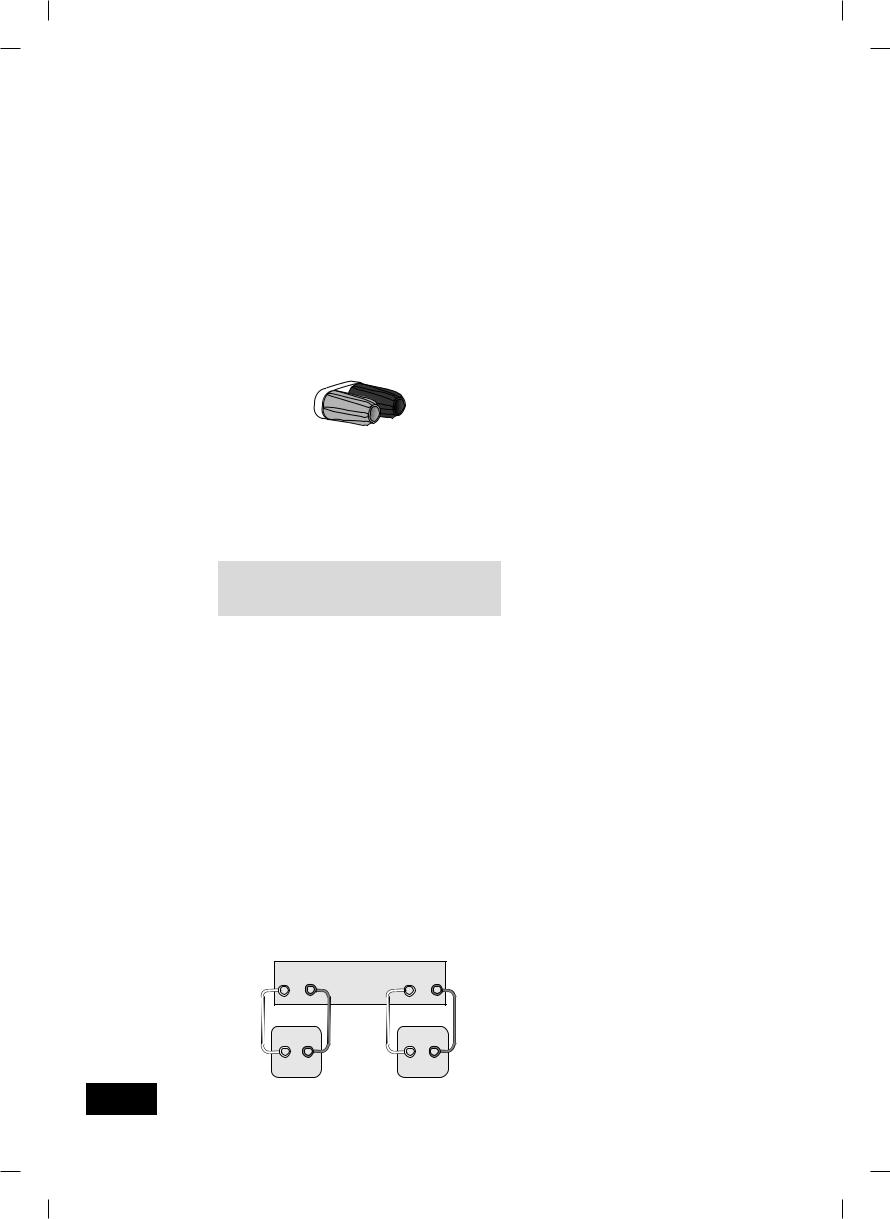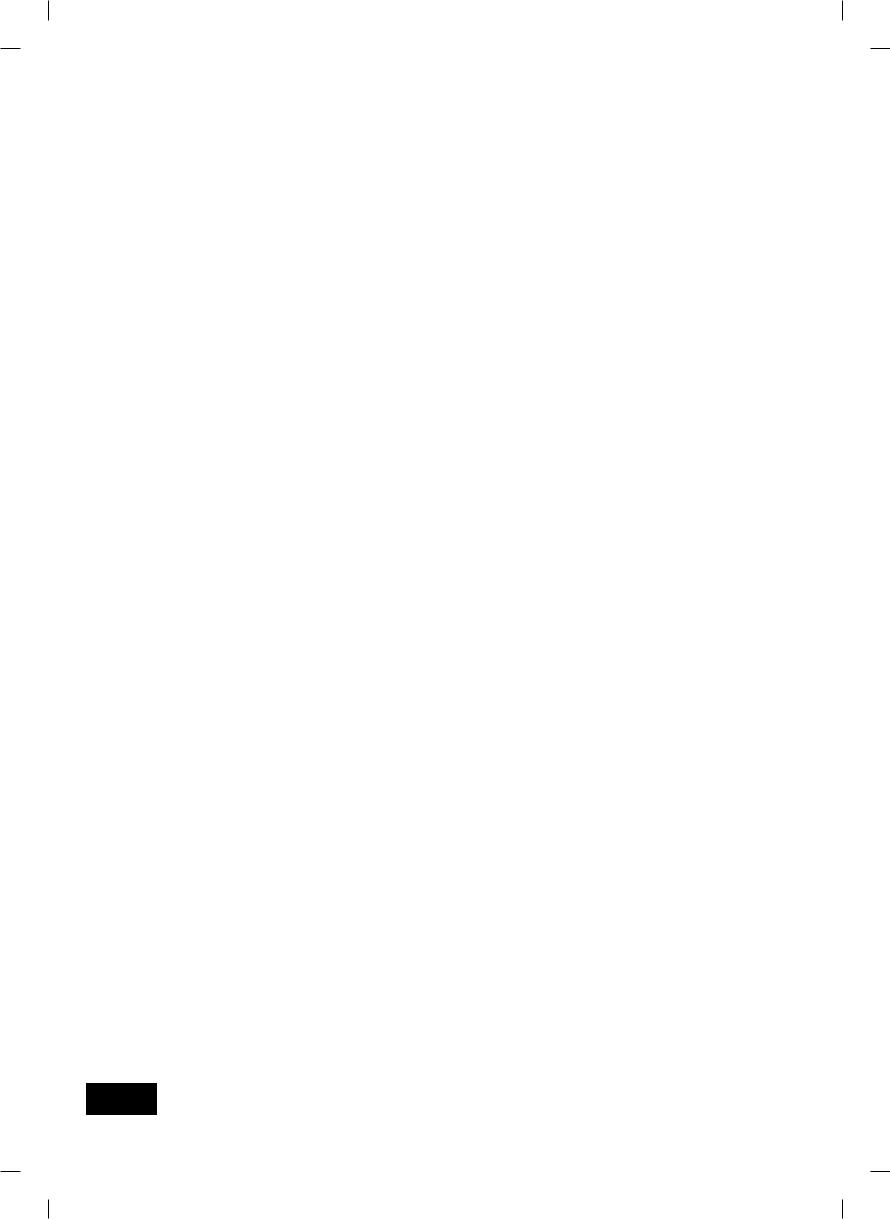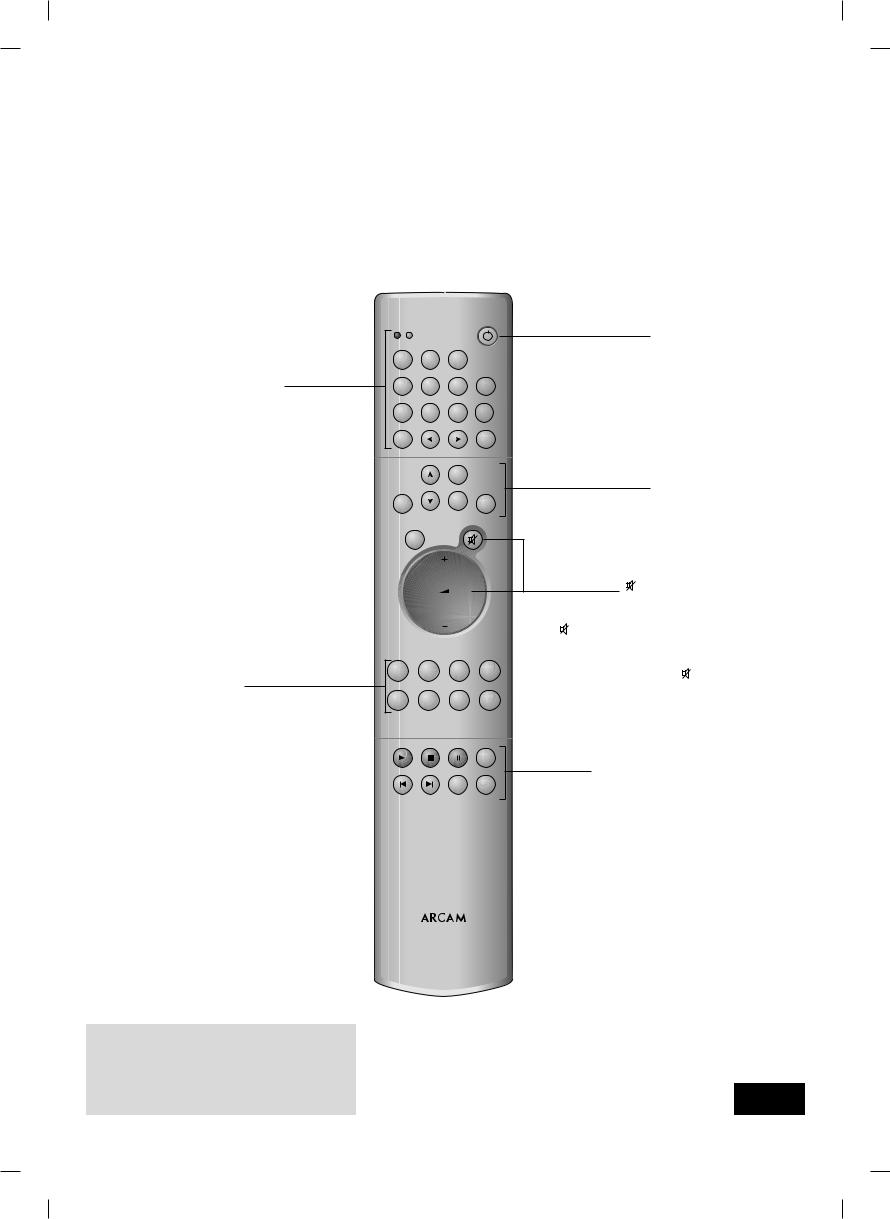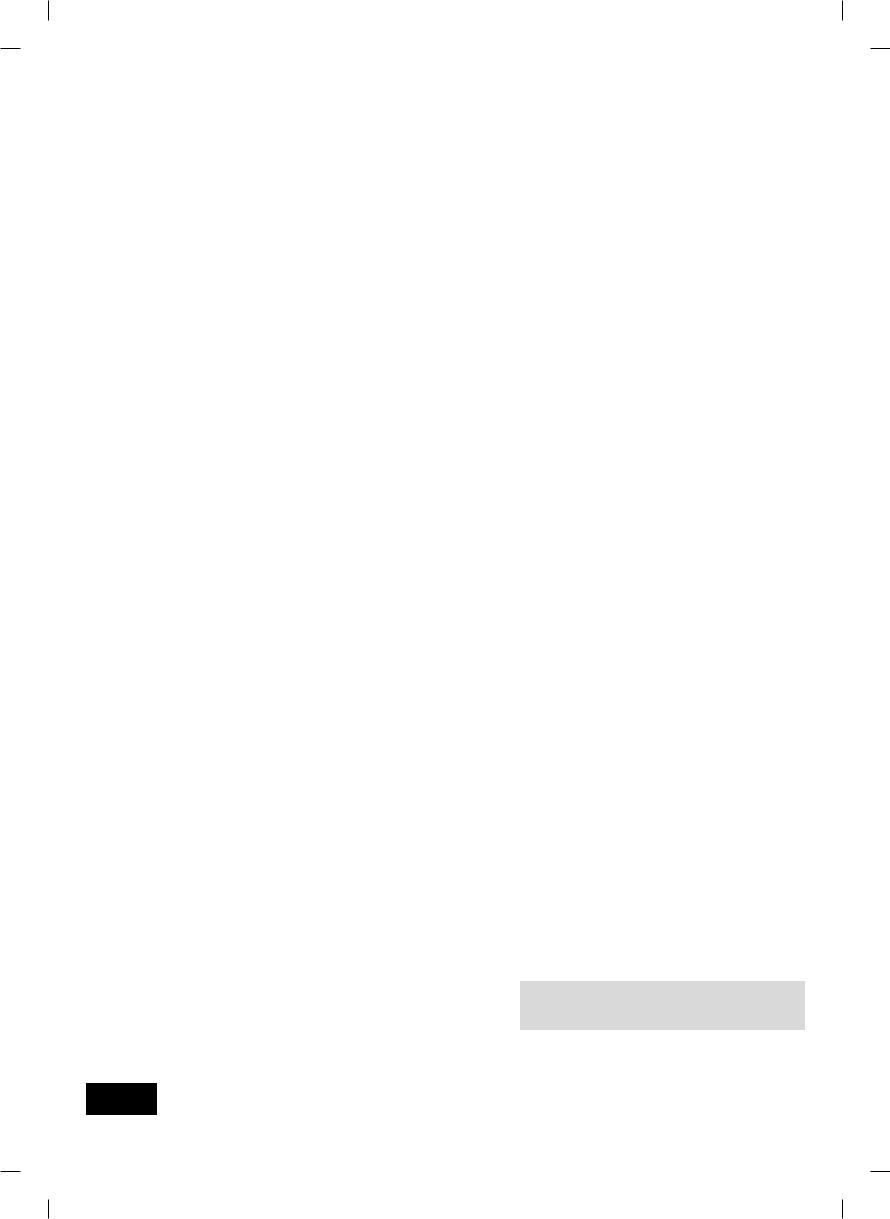CAMBRIDGE AUDIO A75 User Manual [fr]

H A N D B O O K |
A65 |
|
A75 |
|
P75 |
Arcam A65, A75 and P75 amplifiers |
English |
|
|
|
|
Amplificateurs Arcam A65, A75 et P75 |
|
|
|
|
|
Français |
|
|
|
|
|
Arcam-Verstärker A65, A75 und P75 |
|
|
|
|
|
Deutsch |
|
|
|
|
|
|
|
|
|
|
|
|
|
|

Safety guidelines
Safety instructions
This product is designed and manufactured to meet strict quality and safety standards. However, you should be aware of the following installation and operation precautions:
1. Take heed of warnings and instructions
You should read all the safety and operating instructions before operating this appliance. Retain this handbook for future reference and adhere to all warnings in the handbook or on the appliance.
2. Water and moisture
The presence of electricity near water can be dangerous. Do not use the appliance near water – for example next to a bathtub, washbowl, kitchen sink, in a wet basement or near a swimming pool, etc.
3. Object or liquid entry
Take care that objects do not fall and liquids are not spilled into the enclosure through any openings. Liquid filled objects such as vases should not be placed on the equipment.
4. Ventilation
Do not place the equipment on a bed, sofa, rug or similar soft surface, or in an enclosed bookcase or cabinet, since ventilation may be impeded. We recommend a minimum distance of 50mm (2 inches) around the sides and top of the appliance to provide adequate ventilation.
5. Heat
Locate the appliance away from naked flames or heat producing equipment such as radiators, stoves or other appliances (including other amplifiers) that produce heat.
6. Climate
The appliance has been designed for use in moderate climates.
7. Racks and stands
Only use a rack or stand that is recommended for use with audio equipment. If the equipment is on a portable rack it should be moved with great care, to avoid overturning the combination.
8. Cleaning
Unplug the unit from the mains supply before cleaning.
The case should normally only require a wipe with a soft, damp, lint-free cloth. Do not use paint thinners or other chemical solvents for cleaning.
We do not advise the use of furniture cleaning sprays or polishes as they can cause indelible white marks if the unit is subsequently wiped with a damp cloth.
9. Power sources
Only connect the appliance to a power supply of the type described in the operating instructions or as marked on the appliance.
10. Power-cord protection
Power supply cords should be routed so that they are not likely to be walked on or pinched by items placed upon or against them, paying particular attention to cords and plugs, and the point where they exit from the appliance.
11. Grounding
Ensure that the grounding means of the appliance is not defeated.
12. Power lines
Locate any outdoor antenna/aerial away from power lines.
13. Non-use periods
If the unit has a standby function, a small amount of current will continue to flow into the equipment in this mode. Unplug the power cord of the appliance from the outlet if left unused for
a long period of time.
14. Abnormal smell
If an abnormal smell or smoke is detected from the appliance, turn the power off immediately and unplug the unit from the wall outlet. Contact your dealer immediately.
15. Servicing
You should not attempt to service the appliance beyond that described in this handbook. All other servicing should be referred to qualified service personnel.
16. Damage requiring service
The appliance should be serviced by qualified service personnel when:
A.the power-supply cord or the plug has been damaged, or
B.objects have fallen, or liquid has spilled into the appliance, or
C.the appliance has been exposed to rain, or
D.the appliance does not appear to operate normally or exhibits a marked change in performance, or
E.the appliance has been dropped or the enclosure damaged.
Safety compliance
This product has been designed to meet the EN60065 international electrical safety standard.
A65/A75/P75
2

Using this handbook
This handbook has been designed to give you all the information you need to install, connect, set up and use the Arcam A65, A75 and P75 amplifiers. The remote control handset supplied with the equipment is also described.
It may be that your amplifier has been set up as part of your system installation by a qualified Arcam dealer. In this case, you may wish to skip the sections of this handbook dealing with installation and setting up the unit. Use the Contents list on this page to guide you to the relevant sections.
Models covered
This handbook covers two integrated amplifiers:
A65
A75
and one power amplifier:
P75
These amplifiers have many features in common.
Both the A65 and A75 have remote controlled input selection and a motorised volume control which can be operated by the CR-389 remote control handset supplied.
Safety
Safety guidelines are set out on the inside front cover of this handbook.
Many of these items are common sense precautions, but for your own safety, and to ensure that you do not damage the unit, we strongly recommend that you read them.
Contents
Safety guidelines |
2 |
Safety instructions |
2 |
Safety compliance |
2 |
Using this handbook |
3 |
Models covered |
3 |
Safety |
3 |
Installation: A65 and A75 |
4 |
Positioning the unit |
4 |
Connecting to loudspeakers |
4 |
Connecting to a power supply |
4 |
Connecting to other equipment |
5 |
Using the amplifiers |
6 |
Recording onto tape |
6 |
Using a remote control |
6 |
Using the remote control |
7 |
CR-389 remote control |
7 |
Installation: P75 |
8 |
Loudspeaker connection |
8 |
Connecting to other equipment |
8 |
Connecting to a power supply |
8 |
Using the power amplifier |
8 |
Bi-wiring and bi-amping loudspeakers |
9 |
Before you start |
9 |
Bi-wiring your loudspeakers |
9 |
Bi-amping your system |
9 |
Technical specifications |
10 |
Guarantee |
11 |
On-line registration |
11 |
A65/A75/P75
3

Installation: A65 and A75
Positioning the unit
Place your amplifier on a level, firm surface.
Avoid placing the unit in direct sunlight or near sources of heat or damp.
Ensure adequate ventilation. Do not place the unit in an enclosed space such as a bookcase or cabinet as both of these will impede air flow through the ventilation slots.
Connecting to loudspeakers
Your amplifier is fitted with loudspeaker terminals to BFA (British Federation of Audio) standard specification.
BFA loudspeaker terminals
The terminal will accept spade terminals, bare wires or a BFA plug. BFA plugs are available from your Arcam dealer. To connect a bare wire or spade terminal unscrew the red (or black) part of the loudspeaker terminal first.
Insert the wire or spade terminal and screw it back up.
CAUTION: Do not over tighten the loudspeaker terminals or use a wrench, pliers, etc., as this could cause damage to the terminals which will not be covered under warranty.
Connect the right hand speaker to the terminals on the back of your amplifier marked R and the left speaker to the terminals marked L.
Connect your loudspeakers so that the red (positive/+) terminal on each loudspeaker is connected to the red (positive/+) terminal on the amplifier. Your loudspeaker cables may be marked to show polarity (negative/– and positive/+), if not, then the positive terminal can usually be identified by a ridge or coloured marking.
Now connect your loudspeakers’ black (negative/–) terminals to the black (negative/–) terminals on the amplifier.
Ensure that no stray strands of inner wires are allowed to touch another cable or the amplifier’s casing. This can cause a short circuit and damage your amplifier! Two pairs of speakers may be connected at the same time provided each pair is rated between 8 and 16Ω. If one or both pairs have an impedance of less than 8Ω, the combined load on the amplifier falls below 4Ω and could cause an overload. If so, the overload protection circuit engages and the amplifier will not work.
+ |
– |
Arcam A65 or A75 amplifier |
– |
+ |
|||
|
R |
|
L |
+ |
– |
+ |
– |
Right |
|
|
Left |
speaker |
|
|
speaker |
A65/A75/P75
SP1 DIRECT terminals 3
Are switched off when a headphone jack plug is inserted in the headphone socket coon the front of the amplifier or, by pressing the MUTE button on the remote control handset.
SP2 SWITCHED terminals 4
Are switched off when a headphone jack plug is inserted in the headphone socket coon the front of the amplifier or, by pressing the MUTE button on the remote control handset.
If you want to connect speakers for occasional use (perhaps in another room), connect them to these terminals. They can be turned off easily by releasing the front panel switch cn.
Volume control settings
It is important to realise that the position of the volume control is not an accurate indication of the power delivered to your loudspeakers. The amplifier will often deliver its full power long before the volume control reaches its maximum position particularly when listening to heavily recorded compact discs. However the amplifier also has to be capable of giving full power output from much lower level sources, such as tuners and cassette decks. Using these sources, the volume control
setting may be much higher before distortion (audible overload) sets in.
Connecting to a power supply
Wrong plug?
Check that the plug supplied with the unit fits your supply and that your mains supply voltage agrees with the voltage setting (120V or 230V) indicated on the rear panel of the unit.
If your mains supply voltage or mains plug is different, consult your Arcam dealer or Arcam Customer Support on +44 (0)1223 203203.
Mains lead
The appliance is normally supplied with a moulded mains plug already fitted to the lead. If for any reason the plug needs to be removed, it must be disposed of immediately and securely, as it is a potential shock hazard when inserted into the mains socket. Should you require a new mains lead, contact your Arcam dealer.
Plugging in
Push the plug (IEC line socket) of the power cable supplied with the unit into the socket ( ) in the back of the unit. Make sure
it is pushed in firmly.
Put the plug on the other end of the cable into your power supply socket and switch the socket on.
4 |
Wiring your loudspeakers |

Connecting to other equipment
All of the input sockets (except PHONO) have the same sensitivity and may be used with equipment other than that labelled, if you need to do so.
The use of high quality interconnect cables to and from other hi-fi equipment is recommended to ensure the best sound quality (sonic performance). Ask your Arcam dealer’s advice on cable selection.
AV PROCESSOR/TAPE switch br (A75 only)
If you are using the amplifier with an external processor such as a Dolby Pro Logic or Dolby Digital decoder you should select the AV processor. Connect the left and right audio output sockets of your processor to the corresponding AV/DVD input 8. Press and hold the TAPE MONITOR switch br for five
or more seconds, the amplifier switches to a fixed gain. This allows the volume control of your processor to act as a master control and adjust the sound level of the speakers attached
to both the A75 and the processor simultaneously. If you then switch back to another input, for example, CD, the volume control is switched back in circuit again and the amplifier functions as normal. You may hear a slight ‘click’ when you switch to another input. This is normal.
WARNING: If the AV PROCESSOR/TAPE switch is set to
AV PROCESSOR and the LED is illuminated, do not use the AV/DVD socket for any equipment except a
processor with its own volume control. Otherwise this could result in a signal being sent to your loudspeakers at high levels which may damage the loudspeakers.
PRE-AMP OUT 5
You will only need to use these sockets if you have a separate power amplifier. To use your amplifier as a preamplifier connect these sockets to the input sockets (POWER AMP IN or
PWR AMP IN) of your power amplifier. If your power amplifier is an Arcam P75, P85 or Alpha series you can use it in
conjunction with the power amplifiers in your integrated amplifier to bi-amplify suitable loudspeakers. See the section ‘Bi-wiring and bi-amping loudspeakers’ for details.
TAPE RECORD OUT 6
Connect these output sockets to the input sockets of your cassette deck (usually labelled RECORD).
TAPE PLAY IN 7
Connect these input sockets to the output sockets of your cassette deck (usually labelled PLAY). If you do not have a cassette deck you can use this input for other (line level) equipment, such as a CD player, tuner, VCR, etc., but not a turntable (record deck).
AV/DVD 8 VCR 9 TUNER bk CD bl
(AV=audio visual, DVD=digital versatile disc)
Connect these input sockets to the audio output sockets of the above named equipment.
PHONO bm
Connect these input sockets to the leads from your turntable (record deck). The phono stage is suitable for moving magnet (MM) or high output moving coil (MC) cartridges. If you are using a low output MC cartridge ask your dealer about a suitable external MC preamplifier.
PHONO/LINE switch bn (A75 only)
If you don’t have a record deck and therefore don’t want to use the PHONO input socket, press this button in (with the tip of a pencil or a ball point pen) to convert the PHONO input to a LINE input for equipment such as a CD player, tuner, VCR etc. Press and release the button to use as PHONO input again.
Ground terminal bo
Connect the earth lead (if fitted) from your turntable or pick-up arm, to this.
A65/A75/P75
5

Using the amplifiers
Listen selector bq
Selects the input you wish to listen to. The selected input signal is also sent to the TAPE RECORD OUT 6sockets to allow
the signal to be recorded, assuming you have a tape deck connected. It is also sent to the PRE-AMP OUT sockets 5.
TAPE br
Push this switch in to listen to playback from a cassette deck connected to the amplifier’s TAPE PLAY IN sockets 7.
It also enables you to monitor the recording being made on a 3 head cassette deck.
Note: If the tape switch is in you will be unable to listen to a source selected by the LISTEN SELECTOR bq.
VOLUME bs
Adjusts the volume level of the loudspeakers, headphone and pre-amplifier out sockets.
The volume control is motorised and can be controlled remotely with the use of a suitable remote control handset, such as the CR-389 supplied (see the section ‘Using the remote control’ for details).
DIRECT bt
Push this switch in to bypass the bass, treble and balance controls. This switches these controls out of the circuit (minimising the signal path) and will generally give a small improvement in sound quality.
BASS ck
Rotate clockwise to boost the bass response and anticlockwise to cut the bass response. For a flat response leave in the central ‘click’ position.
TREBLE cl
Rotate clockwise to boost the treble response and anticlockwise to cut the treble response. For a flat response leave in the central ‘click’ position.
The range of the tone controls has been deliberately limited
to approximately plus or minus 6dB (decibels) at the frequency extremes. This is usually sufficient to correct small deficiencies in recordings or speakers.
BALANCE cm
Rotate clockwise or anti-clockwise to move the position of the stereo image. This may be necessary if it is not possible to sit centrally between the speakers. In normal use leave in the central ‘click’ position.
SP2 cn
Push the button in to select the loudspeakers connected to the SP2 4 speaker terminals. To disconnect the speakers release the switch again.
HEADPHONE socket co
Accepts headphones rated between 8Ω and 2kΩ fitted with a 6.3mm stereo jack plug. If your headphones are fitted with a different plug, contact your dealer for a suitable adaptor.
Inserting a headphone jack plug automatically mutes (i.e. cuts off) the loudspeakers, but does not mute the PRE-AMP OUT sockets 5.
A65/A75/P75
POWER cp
Switches the amplifier on and off.
Power indicator cq
When the amplifier is switched on, this will initially glow orange.
After a few seconds it will glow green and a slight click may be heard (as the output muting relay disengages). When the indicator glows orange, the speakers are disconnected and an internal protection circuit is working.
If the indicator glows orange during normal use it may be due to an amplifier output overload. Switch the amplifier off and wait for 2 to 3 minutes before switching on again.
If the indicator continues to glow orange, switch the unit off, remove all the speaker cables and switch on again. If the indicator then goes to green when switched on this indicates a problem with the speakers or speaker cables. Check the speakers and speaker cables for short circuits
before reconnecting them. If the indicator continues to glow orange with no speakers connected, contact your Arcam dealer.
Note that the power indicator glows orange when the amplifier is muted from the remote control.
Remote control receiver cr
Make sure nothing is standing in front of the remote control receiver, otherwise messages from the remote control handset cannot be received and it will appear not to work!
Recording onto tape
To record from another piece of hi-fi equipment (an input source), e.g. CD, to a tape deck connected to the amplifier, first select the CD input with the input selector bq. Set your tape deck into its record mode. Press PLAY on your CD player. The CD signal will now be recorded onto your cassette deck. If your cassette deck is a 3-head type it is possible to monitor the actual recording on the tape. To do this push the TAPE button br in. Switching this button in/out enables you to do
an A/B comparison between the source signal and the recorded signal.
Using a remote control
The A65 and A75 offer remote control of the input selection, volume control and mute via the CR-389 remote handset supplied. It may also be possible to operate these functions with other remote control handsets that use the Philips RC-5 protocol.
If the amplifiers are muted via remote control, the power indicator glows orange. To cancel the mute function, press MUTE again or either of the volume up/down buttons on the remote control handset. If you mislay the handset after muting the amplifier, turn it off with the POWER switch cp for 20 seconds, then switch it back on again to allow the internal mute system to reset.
6

Using the remote control
CR-389 Remote Control
The CR-389 remote control gives access to all functions available on the front panel. It also has controls to operate Arcam CD players, AM/FM and DAB tuners.
|
|
TUNER |
|
|
|
|
|
|
FM |
DAB |
|
|
|
Not used with A65/A75 |
|
||
|
|
|
|
|
|
|||
|
|
|
|
|
The Power/Standby button does not |
|
||
FM |
MENU |
DISP |
|
operate with the A65 and A75 |
|
|||
DAB |
|
|
|
amplifiers. |
|
|
||
Tuner controls |
|
|
|
|
|
|
||
|
2-10 |
3-11 |
4-12 |
|
|
|
|
|
1-9 |
|
|
|
|
|
|||
These offer basic control of |
|
|
|
|
|
|
|
|
Arcam tuners. |
|
6-14 |
7-15 |
8-16 |
|
|
|
|
5-13 |
|
|
|
|
|
|||
MODE |
|
|
BAND |
|
|
|
|
|
|
|
|
SP1 |
|
Not used with A65/A75 |
|
||
|
|
|
|
|
|
|||
ENTER |
|
SP2 |
DISP |
These control features of other |
|
|||
|
amplifiers in the Arcam range. |
|
||||||
|
|
|
||||||
|
|
|
|
|
|
|||
|
SEL |
|
|
|
|
|
|
|
|
|
|
|
|
Volume and Mute ( |
) |
|
|
|
|
|
|
|
Press + to increase volume or – to decrease the |
|||
|
|
|
|
|
output volume on the amplifier. |
|
||
|
|
|
|
|
Press |
to mute the speaker connections and |
||
|
|
|
|
|
preamp outputs. Both tape outputs and the |
|||
|
|
|
|
|
headphone socket remain active. |
|
||
PHONO |
|
AUX |
CD |
TUNER |
Mute is disabled either by pressing |
again, or |
||
Input selection buttons |
|
|
|
|
||||
|
|
|
|
by adjusting the volume. |
|
|
||
These operate in the same |
|
|
|
|
|
|
||
|
|
|
|
|
|
|
|
|
AV |
|
DVD |
VCR |
TAPE |
|
|
|
|
way as the input selector |
|
|
|
|
|
|
|
|
on the front panel of your |
|
AMPLIFIER |
|
|
|
|
|
|
integrated amplifier. |
|
|
|
|
|
|
||
|
|
|
|
|
|
|
|
|
|
|
|
|
RPT |
CD controls |
|
|
|
|
|
|
|
|
|
|
||
|
|
|
PROG |
DISP |
These offer basic controls of |
|
||
|
|
|
Arcam CD players. |
|
|
|||
|
|
|
|
|
|
|
||
|
|
CD |
|
|
|
|
|
|
|
|
CR-389 |
|
|
|
|
|
|
NOTE: Remember to install the two supplied AAA batteries before trying to use your remote control!
Do not place anything in front of the IR receiver on the left of the A65 or A75, or the remote control may not work.
A65/A75/P75
7

Installation: P75 power amplifier
The P75 power amplifier can be used in conjunction with the A65 and A75 integrated amplifiers (or other Arcam amplifiers) to bi-amplify loudspeakers that have two pairs of input connections (i.e. are bi-wireable). The P75 can also be used with a pre-amplifier such as the Arcam 9C or an AV processor or amplifier with PRE-AMP OUT sockets.
Loudspeaker connections
Connect up following the instructions for installing the A65 and A75 integrated amplifiers (see page 4).
Connecting to other equipment
PWR AMP IN 5
Connect these sockets to your preamplifier output sockets. Alternatively, if you are using an integrated amplifier (as your pre-amp) such as the A65, A75 or Alpha series amplifiers, connect the PWR AMP IN sockets to the PRE AMP OUT sockets on those amplifiers.
MONO LINK 6
The P75 can be adapted to provide two mono loudspeaker outputs from a single input.
Pull out the U-link 8 supplied and use it to connect the MONO LINK sockets 6 together.
Utilising one P75 power amplifier per loudspeaker will enable you to bi-amplify bi-wireable loudspeakers. This is particularly beneficial for top quality stereo installations with a separate preamplifier, or for the left, centre and right channel loudspeakers in a five speaker Dolby Pro Logic™ or Dolby Digital™ system.
Contact your Arcam dealer for more detailed information.
DAISY CHAIN
The P75 is capable of driving further P75 amplifiers (or any other power amplifier), to drive more speakers (e.g. those in other rooms or tri-amplified speakers etc). Connect the extra power amplifier inputs to the MONO LINK outputs 6 left to left, right to right with suitable high quality phono to phono cables.
Connecting to a power supply
Connect up following the instructions for installing the A65 and A75 integrated amplifiers (page 4).
CIM MODULE 7
The CIM (custom install module) is an optional module that enables you to adjust the gain of the left and right channels of the power amplifier independently and also to switch the
power amplifier on/off remotely, with a 12 volt trigger. The CIM module would normally be used in a multi-room set up. When
a CIM module is fitted into a power amplifier, the front panel power switch is disabled.
See your Arcam dealer for further information.
Using the power amplifier
SP1 DIRECT terminals 3
Are switched off when a headphone jack plug is inserted in the headphone socket bk on the front of the amplifier or, by pressing the MUTE button ( ) on the remote control handset.
SP2 9
Push the button in to select the loudspeakers connected to the SP2 4 speaker terminals. To disconnect the speakers, release the switch again.
HEADPHONE socket bk
Accepts headphones rated between 8Ω and 2kΩ fitted with a 6.3mm stereo jack plug. If your headphones are fitted with a different plug contact your dealer for a suitable adaptor.
Inserting a headphone jack plug automatically mutes (i.e. cuts off) the loudspeakers.
POWER bl
Switches the amplifier on and off.
Power indicator bm
This initially glows orange. After a few seconds, the colour changes to green and a slight click may be heard as the output muting relay disengages.
When the indicator glows orange, the speakers are disconnected and an internal protection circuit is working.
If the indicator glows orange during normal use it may be due to an amplifier output overload. Switch the amplifier off and wait for 2–3 minutes before switching on again.
If the indicator continues to glow orange, switch the unit off, remove all the speaker cables and switch on again. If the indicator goes green on switching on, there is a problem
with the speakers or speaker cables. Check the speakers and speaker cables for short circuits before reconnecting them.
If the indicator continues to glow orange with no speakers connected, contact your Arcam dealer.
A65/A75/P75
8

Bi-wiring and bi-amping loudspeakers
Before you start |
Bi-amping your system |
WARNING: Do not make any connections to your amplifier while it is switched on or connected to the mains supply.
Before switching on please check all connections thoroughly, making sure bare wires or cables are not touching the amplifier in the wrong places (which could cause short circuits) and you have connected positive (+) to positive and negative (–) to negative.
Always ensure that the volume control on your amplifier is set to minimum before starting these procedures.
Bi-wiring your loudspeakers
Bi-wiring improves the sound of your system because it divides the high and low frequency signal currents into separate speaker cables. This avoids signal distortions arising from the high and low frequency currents interacting with one another within a single cable, as in conventionally wired systems.
You will need:
Speakers – with four input terminals each: these will be marked HF (High Frequency) and LF (Low Frequency).
Loudspeaker cables – two pairs of cables per loudspeaker (which may be joined at the amplifier end if your amplifier has only one pair of output terminals per channel). Or, a suitably terminated cable set (a loom, probably prepared by your dealer and capable of being used for bi-wiring in one length).
How to bi-wire loudspeakers
1.Remove the terminal links on the rear of your loudspeakers
WARNING: This step is essential or damage to your amplifier may result which is not covered under warranty.
2.Connect the cables as shown in the diagram below, ensuring correct polarity at all times.
|
|
Arcam A65 or A75 amplifier |
|
||
|
+ |
– |
|
+ |
– |
|
|
R |
|
|
L |
+ |
HF |
– Right |
+ |
HF |
– Left |
+ |
LF |
– speaker |
+ |
LF |
– speaker |
The performance of your system can be further enhanced over that achieved with bi-wiring, by extending the principle one stage further to include separate amplification for the low and high frequency drive units in each loudspeaker enclosure.
Connect the amplifier to the high frequency (HF) terminals and connect the power amplifier to the low frequency (LF) terminals.
You will need:
Speakers – with four input terminals each (as with bi-wiring): these will be marked HF (High Frequency) and LF (Low Frequency).
Two amplifiers – one of these would be the A65 or A75 and the other an Arcam power amplifier (e.g. P75).
Loudspeaker cables – one pair of cables per loudspeaker or a suitably terminated cable set (a loom, probably prepared by your dealer and capable of being used for bi-amping in one length).
Interconnect cables – one pair of high quality interconnect cables.
How to set up a bi-amped system
1.Remove the terminal links on the rear of your loudspeakers.
WARNING: This step is essential or damage to your amplifier may result which is not covered under warranty.
2.Connect the cables as shown in the diagram below, ensuring correct polarity at all times.
3.Use the interconnect cables to connect the AUDIO PREOUT sockets of the A65 or A75 to the corresponding PWR AMP IN sockets of the power amplifier.
+ |
|
Arcam A65 or A75 amplifier |
+ |
– |
|
– |
|||
|
R |
|
L |
|
+ |
|
– |
+ |
– |
Right |
HF |
|
HF |
Left |
speaker |
LF |
– |
LF |
speaker |
|
|
|||
+ |
|
– |
+ |
– |
+ |
|
– |
+ |
– |
|
R |
Arcam P75 power amplifier |
L |
|
|
|
|
|
Bi-wiring using one set of connections on amplifier |
Recommended bi-amping configuration |
A65/A75/P75
9

Technical specifications
|
A65 |
A75 |
P75 |
Output power (20Hz–20kHz) |
|
|
|
8Ω, continuous |
40W |
50W |
50W |
8Ω, 1 channel, 1KHz |
50W |
60W |
60W |
4Ω, 1 channel, 1KHz |
80W |
90W |
90W |
Harmonic Distortion |
|
|
|
Rated output into 8Ω at 1kHz |
0.01% |
0.01% |
0.005% |
Peak current rating |
±15A |
±15A |
±15A |
L/R Crosstalk |
–68dB |
–68dB |
–90dB |
Input sensitivity for rated power output |
250mV |
260mV |
540mV |
Frequency response ± 0.25dB |
20Hz–20kHz |
20Hz–20kHz |
20Hz–20kHz |
Inputs |
|
|
|
Line inputs: |
|
|
|
Noise (CCIR) ref. rated power |
–100dB |
–100dB |
–110dB |
Input impedance |
12kΩ |
12kΩ |
100kΩ |
AV/DVD (Processor Mode): |
|
|
|
Input impedance |
N/A |
12kΩ |
N/A |
Input sensitivity |
N/A |
540mV |
N/A |
Power Amplifier: |
|
|
|
Input impedance |
N/A |
N/A |
100kΩ |
Phono input: |
|
|
|
Noise (CCIR) ref. rated power |
–75dB |
–76dB |
N/A |
Input sensitivity |
1.9mV |
2.0mV |
N/A |
Input impedance |
47kΩ |
47kΩ |
N/A |
Overload margin |
30dB |
30dB |
N/A |
Outputs |
|
|
|
Pre-amplifier output: |
|
|
|
Nominal output level |
510mV |
540mV |
N/A |
Maximum output level |
8V |
8V |
N/A |
Output impedance |
<3Ω |
<3Ω |
N/A |
Tape output: |
|
|
|
Output impedance |
<3Ω |
<3Ω |
N/A |
Headphones: |
|
|
|
Maximum output level into 600Ω |
40mW |
40mW |
40mW |
Output impedance |
80Ω |
80Ω |
80Ω |
Mains voltage |
230V ± 10% |
230V ± 10% |
230V ± 10% |
|
115V ± 10% |
115V ± 10% |
115V ± 10% |
Power consumption (max) |
370VA |
400VA |
400VA |
Physical |
|
|
|
Dimensions W x D x H |
430 x 330 x 85mm |
430 x 330 x 85mm |
430 x 330 x 85mm |
Weight net |
5.4kg |
5.6kg |
5.6kg |
Weight packed |
6.9kg |
7.1kg |
7.1kg |
Supplied accessories |
Mains lead |
Mains lead |
Mains lead |
|
CR-389 remote |
CR-389 remote |
|
|
2 x AAA batteries |
2 x AAA batteries |
|
E&OE |
|
|
|
|
|
|
|
Continual improvement policy
Arcam has a policy of continual improvement for its products. This means that designs and specifications are subject to change without notice.
NOTE: All specification values are typical unless otherwise stated.
A65/A75/P75
10

Guarantee
Worldwide Guarantee
This entitles you to have the unit repaired free of charge, during the first two years after purchase, at any authorised Arcam distributor provided that it was originally purchased from an authorised Arcam dealer or distributor. The manufacturer can take no responsibility for defects arising from accident, misuse, abuse, wear and tear, neglect or through unauthorised adjustment and/or repair, neither can they accept responsibility for damage or loss occurring during transit to or from the person claiming under the guarantee.
The warranty covers:
Parts and labour costs for two years from the purchase date. After two years you must pay for both parts and labour costs. The warranty does not cover transportation costs at any time.
Claims under guarantee
This equipment should be packed in the original packing and returned to the dealer from whom it was purchased, or failing this, directly to the Arcam distributor in the country of residence.
It should be sent carriage prepaid by a reputable carrier -– NOT by post. No responsibility can be accepted for the unit whilst in transit to the dealer or distributor and customers are therefore advised to insure the unit against loss or damage whilst in transit.
For further details contact Arcam at:
Arcam Customer Support Department,
Pembroke Avenue, Waterbeach, CAMBRIDGE
CB5 9PB, England.
Telephone: +44 (0)1223 203203
Fax: +44 (0)1223 863384
Email: support@arcam.co.uk
Problems!
If your dealer is unable to answer any query regarding this or any other Arcam product please contact Arcam Customer
Support on +44 (0) 1223 203203 or write to us at the above address and we will do our best to help you.
On-line registration
You can register your Arcam product on line at:
www.arcam.co.uk/reg
A65/A75/P75
11
